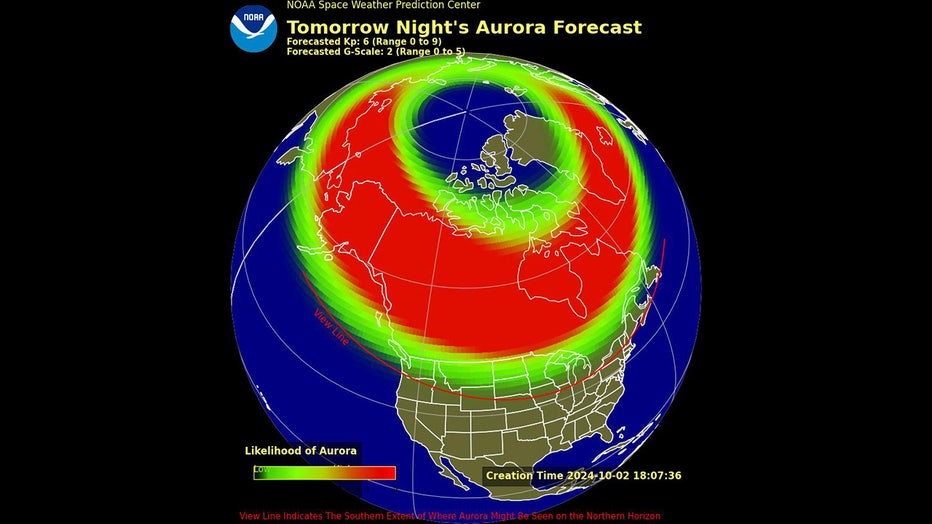Massive solar flare could trigger auroras this week: Will you be able to see it?
NASA’s Solar Dynamics Observatory captured this image of a solar flare – seen as the bright flash in the lower left – on Oct. 1, 2024. The image shows a subset of extreme ultraviolet light that highlights the extremely hot material in flares and whic
A massive solar flare that was ejected from the sun on Tuesday could trigger auroras that are visible in parts of the United States.
One of the biggest solar flares this year
An X7.1 solar flare exploded from the sun at about 6 p.m. ET on Oct. 1, according to the National Oceanic and Atmospheric Administration’s Space Weather Prediction Center.
"This was the second strongest flare thus far in Solar Cycle 25, only bested by an X8.7 flare on May 14th of this year," the NOAA said.
An X-class solar flare is classified as one of the most intense types of flares that the sun can produce, according to NASA.
Here are the chances of seeing auroras in the US

Aurora forecast for 10/3/2024. (SWPC/NOAA)
The chances of seeing auroras in the United States are low but not zero.
According to the NOAA, the likelihood of seeing auroras increases greatly beginning tomorrow, but only for the northernmost states, and even then, the chances are low.
The night of Oct. 3, the NOAA is predicting a Kp = 6, which is just between the range of moderate active to active aurora activity.
There is a possibility that the approaching coronal mass ejection (CME) could "drive the aurora further south to be potentially visible from the northern tier states and upper Midwest," an NOAA spokesperson told FOX TV Stations.
Best times to see auroras
The best time to catch auroras, should you be in the line of sight, is during the mid to late evening hours, the NOAA said.
"So, figure a couple hours in and around the midnight hour local time," the NOAA told FOX.
Also, using a camera could help you see space weather activity that sometimes your own eyes can’t pick up on.
"Finally, the moon will not be a factor, since we are so close to the new moon that just being away from city lights should suffice, by looking to the north if the geomagnetic storm conditions are occurring. G3 levels in the past at just the right time have led to the aurora being captured from northern California," the NOAA said.
RELATED: How to survive: Coronal mass ejection
Geomagnetic storm headed our way
A geomagnetic storm watch has been issued beginning Oct. 3 through Oct. 5. The CME is expected to arrive at Earth on Oct. 3 as a G1 (minor) storm and increase to a G3 (strong) geomagnetic storm by Oct. 4 before weakening to a G2 by Oct. 5.
A G3 storm could trigger false alarms on power systems and issues with GPS could occur, according to the NOAA.

